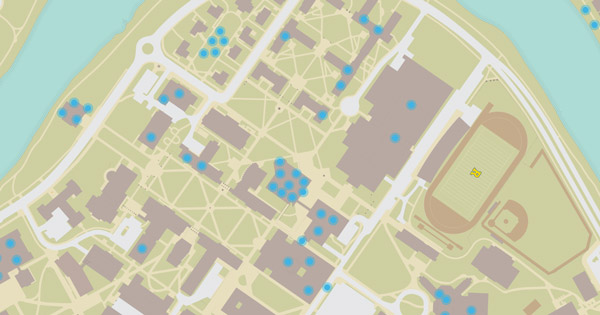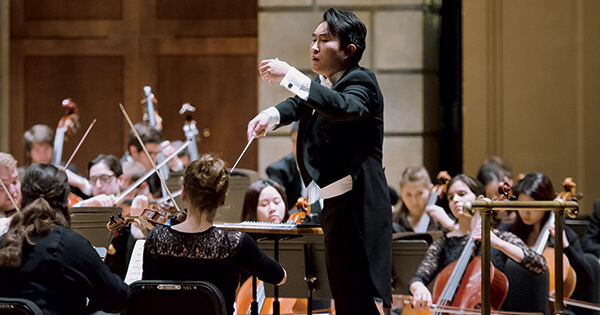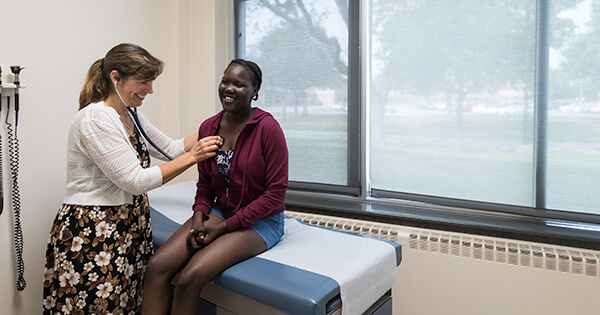New Pregnancy and Infant Clinic Aims to Break Destructive Cycle of Severe Tooth Decay
New Pregnancy and Infant Clinic Aims to Break Destructive Cycle of Severe Tooth Decay
Nearly 75 percent of preschool children from underserved communities all over the world suffer from severe, painful tooth decay, called early childhood caries (ECC). At UR Medicine’s Eastman Institute for Oral Health (EIOH), the number of cases experts see each year is now more than 1,000.
Not only is severe tooth decay debilitating, but it is also extremely expensive to treat—nearly $7,000 per case. In the U.S. alone, more than $1.5 billion is spent on ECC treatment annually. Children who suffer are often in pain, and they miss school—which can contribute to learning issues.
In an effort to address this major public health problem, scientists like Jin Xiao, DDS, PhD, associate professor at EIOH, have done extensive research on perinatal oral health. They know that the bacteria and yeast in a pregnant woman’s mouth gets passed onto her children. These bacteria and yeasts can—and often do—lead to tooth decay.
But many women don’t see a dentist during pregnancy, especially women from underserved communities. And, more than 70 percent of all pregnant women encounter dental problems during those nine months. By the time a dental situation gets dire for a pregnant woman, very few dentists are even willing to treat them. That’s when the cycle starts and accelerates.
“If a woman doesn’t see a dentist during her pregnancy for routine check-ups, a situation that could have been managed might get out of control,” says Dr. Xiao. “This leads to urgent care situations and often results in adverse birth outcomes, like premature delivery and low birth rates. We must break this cycle.”
That’s the mission of a new pregnancy and infant dental clinic at EIOH. It started out treating pregnant patients one morning a week in collaboration with Eastman’s general dentistry and urgent care clinics, with support from Drs. Hans Malmstrom, Yanfang Ren, and Linda Rasubala, as well as referrals from URMC’s Department of Family Medicine. Now, patients are being seen as part of Eastman’s newly established Specialty Care Clinic.
Believed to be the first clinic of its kind in the U.S., it is known to clinicians and patients alike as the Healthy Smiles, Mom and Me program, and has about 150 patients, comprised of pregnant women and their babies, up to one year old. The goal is to see women during pregnancy and break the debilitating cycle of tooth decay—for them and their children.
Tooth decay is the most common chronic disease among U.S. children. It leads to infections, gum disease, taste impairment, and a variety of health issues throughout the body. But, as Dr. Xiao points out, it can be treated and prevented. Ongoing dental care for the pregnant woman and an early establishment of a dental home for the children could mean the difference between a child getting ECC or not.
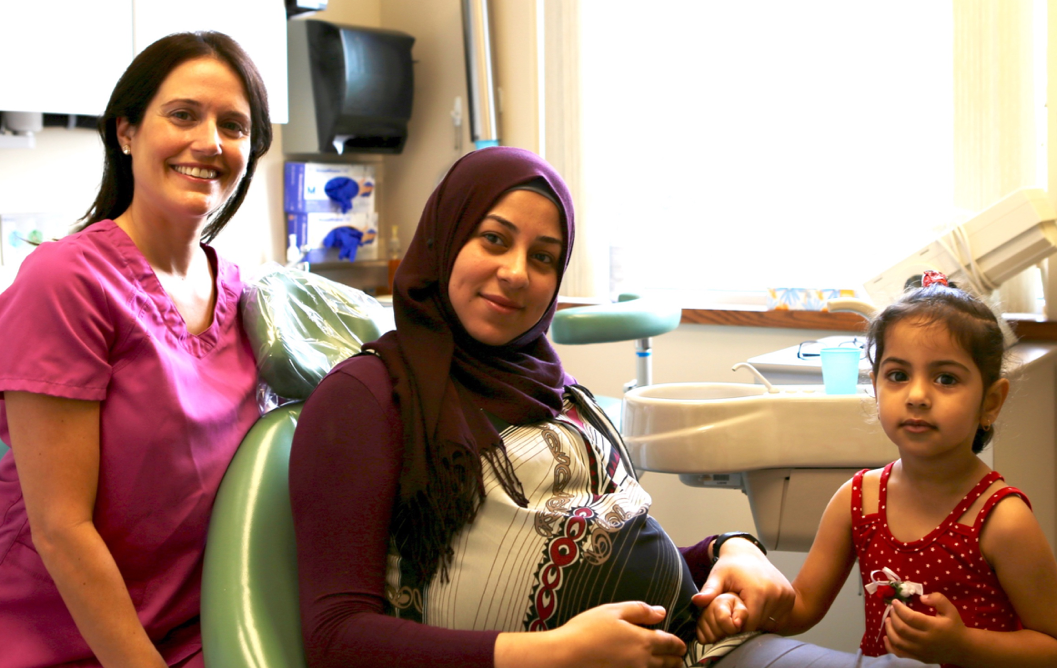
Striving for zero
The research tells a compelling story. If a woman maintains good prenatal oral health during pregnancy, and if her child—starting at birth—receives oral care, then three outcomes are likely: dentists can better predict risk; they can employ effective prevention techniques; and they can detect disease in its very early stages. This means ECC rates drop—significantly.
“In the dental community, we often say ‘one baby tooth plus one pediatric visit equals zero cavities,’” adds Dr. Oriana Ly-Mapes, assistant professor in Eastman’s Pediatric Dentistry Department. The American Academy of Pediatric Dentists underscores this and recommends that, by the time a child is one, families find a dental practice for ongoing dental care and for regular cleanings every six months. This increases the likelihood that a child will receive appropriate prevention and routine oral health care. “The EIOH pregnancy and infant dental clinic will also help babies transition more easily to pediatric dentistry to receive continuing care after age one, an essential part of keeping a healthy smile.”
What’s stopping women from getting this care, and passing along those good habits and practices to their children? A lot of factors. For instance, consider socioeconomic conditions. These women might not have transportation to get to an appointment. They might not have care coverage for other children in their family. They might not be able to afford it—or know that their insurance or Medicaid program will indeed cover it.
“We need to build awareness among these women, so that they better understand the whole picture,” adds Dr. Xiao, who notes that pregnant women can have cleanings and that they should be brushing twice a day and flossing. If they have morning sickness, they should rinse their mouths with a teaspoon of baking soda in a glass of water after they get sick.
“We need to do more on a system level, too.” She adds that, unfortunately, many dentists don’t know the latest prenatal oral health guidelines and that it is safe to examine, and often treat, a pregnant woman. “Education needs to take place to help dentists everywhere understand the latest research and what is safe for women and their unborn children.”
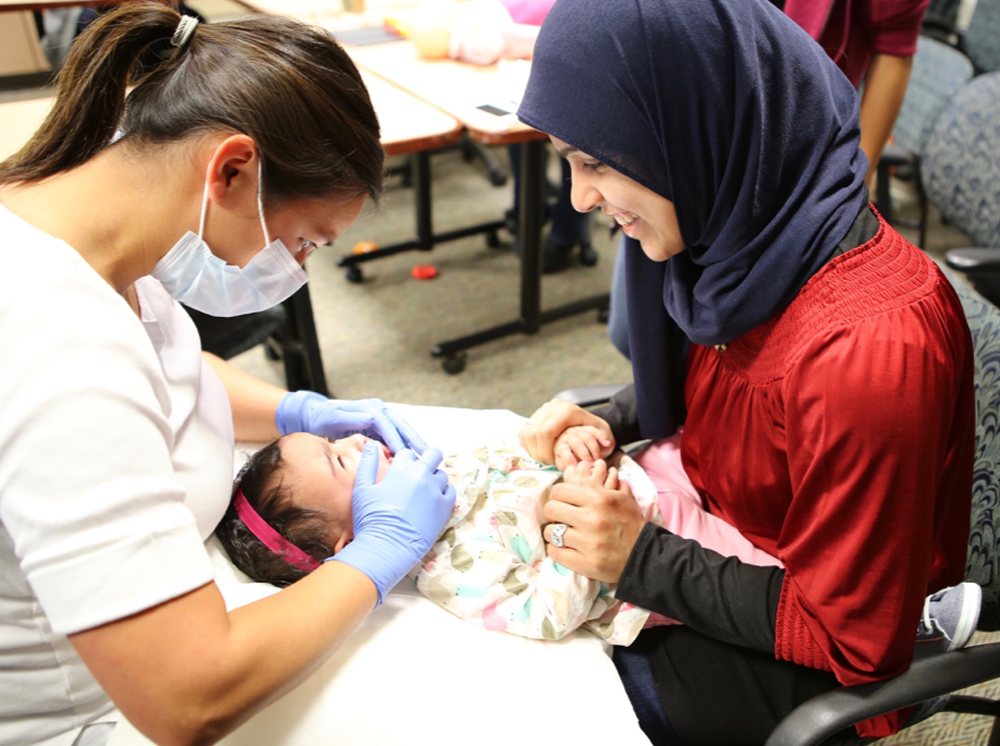
Collaborating for good
Change is starting to happen. The clinic is a good example. Its strong partnerships with the URMC family medicine practice, URMC Obstetricians, and the Monroe County Public Health Department are helping to refer women to its services. “There is opportunity to do even more, though, by growing the services the clinic offers, expanding staff, increasing research efforts, and building linkages with more community service agencies,” Dr. Xiao adds.
Collaboration is key. The clinic is thriving now due to the efforts of Dr. Xiao and her team, along with experts from seven University of Rochester departments: family medicine, OBGYN, epidemiology, computer science, microbiology and immunology, biostatistics, and the School of Nursing, as well as the Rochester community.
Two National Institutes of Health research grants totaling $1 million dollars provide essential support for the clinic as well.
“The clinic is serving many needs,” adds Dr. Xiao. “It’s helping us move from bench to community. It’s where we can combine our research and our clinical practice to make a difference in the lives of these women and their children.”
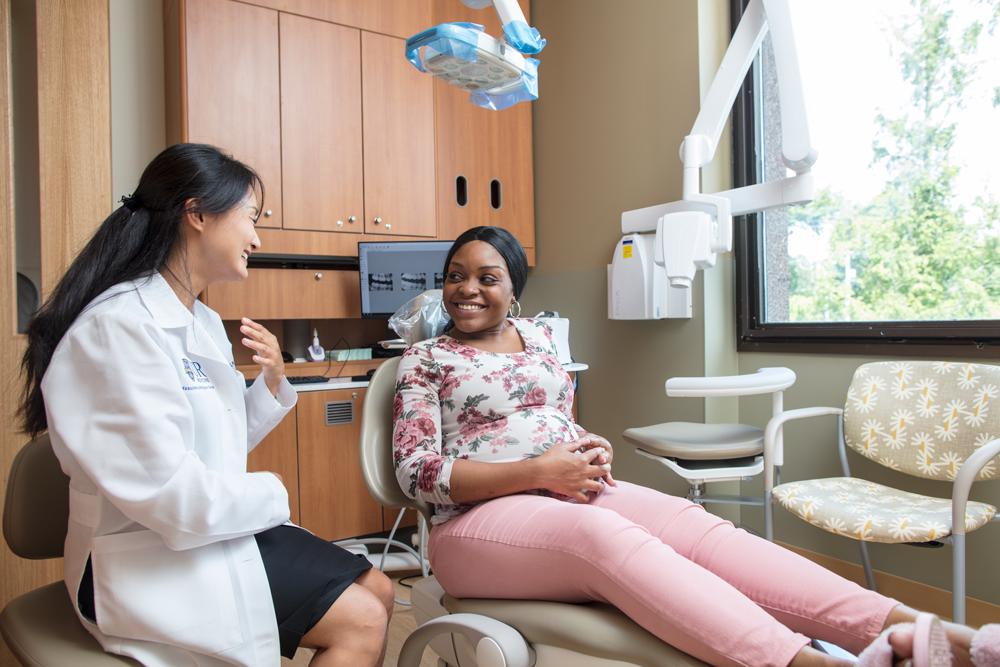
What’s next?
With its multidisciplinary approach, some interesting projects are on the horizon. For instance, the clinic is partnering with the Hajim School of Engineering’s computer science department to develop an app that women could use to help them detect if they or their children have, or are at risk, for tooth decay. “We are in the prototype stage now,” adds Dr. Xiao. “This smart phone health care technology—which is powered by artificial intelligence—could be very helpful in getting women to seek out care.”
Dr. Xiao underscores the many benefits of the clinic’s work. “We are developing cutting-edge microbiome-genome tools, engaging with and serving our community, and are on a path that could revolutionize oral disease prediction, prevention, and diagnosis.”
“Really what this is all about,” she adds, “is helping women and children have beautiful, healthy smiles and lives.”
To learn more about how you can support EIOH’s new perinatal clinic and its “Healthy Smiles, Mom and Me” program, contact Bryan Winters, Director of Advancement and Alumni Relations.


